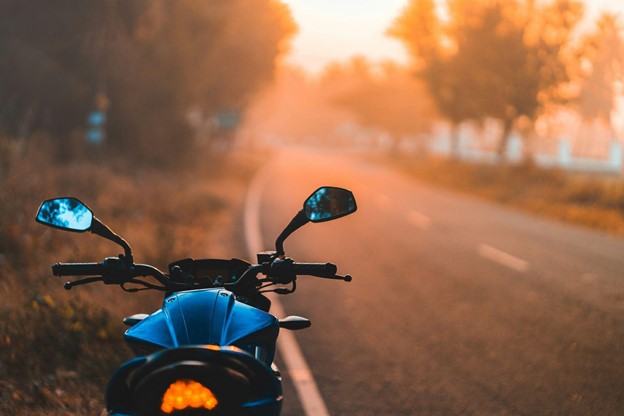India’s love affair with two-wheelers (if you go by recent information) is… quite intense. Almost a intense as Romeo and Juliet, but minus the forbidden part. People are pretty openly infatuated by scooters, motorcycles, mountain bikes, etc. Now, with all that said, the coast isn’t clear yet. There are hundreds of options flooding the market and so many customer segments that have their own needs and wants. So the question is: How do you truly spot the best mileage bike in India for your needs?
You need to make the right decision. Whether you’re a corporate professional zipping through city traffic, a student looking for the most pocket-friendly ride, a nuclear family who wants a second-choice economic option, or a motorhead who’s looking for the next big rush, this guide breaks it all down for you.
So don’t worry too much, and give it a read.
Know Your Riding Profile
Step number one? As always, you have to know who you are.
Start with an honest look at your daily routine. Are you riding short distances through bumper-to-bumper city traffic? Or do you clock highway miles every weekend? For example:
- Corporate professionals: You likely want a hassle-free commuter with excellent mileage in stop-and-go traffic — something lightweight and reliable.
- Nuclear families: You probably need a practical bike for errands, kids’ school runs, and occasional long rides — so comfort and pillion-friendliness matter.
- Students: For you, fuel economy and low maintenance trump all else.
- Motorbike enthusiasts: Even if you crave sporty styling, a balanced mileage figure can keep your running costs down for daily commutes.
Being clear about your usage helps you narrow the list right away.
Understand Real Mileage, Not Just Product Brochures
Official mileage on manufactured websites and corporate brochures always looks more impressive than your initial expectations, but do those real-world conditions suit you? To get a broader answer to these questions, do some in-depth research on YouTube, forums, or community groups. Bikes that consistently deliver close to their claimed mileage under real traffic conditions are the true star performers, not always the ones you see on TV.
Tip: Ask local mechanics and current owners. Their input is gold!
Understand the “Sweet Spot” Engine Capacity
You don’t need the engine with maximum capacity. You need the engine that meets your requirements the best.
Bikes between the 100cc-125cc segment in India remain the kinds of fuel efficiency and customer demand. Bikes like Hero Splendor Plus, TVS Radeon, Honda Shine, and Bajaj Platina dominate here because they balance lightweight build with peppy but frugal engines.
- Corporate pros & families: 110cc–125cc bikes are ideal — enough grunt for short highway runs, but not too thirsty.
- Students: A 100cc or 110cc bike means cheaper insurance and better mileage.
- Enthusiasts: If you’re looking at 150cc or above, choose models known for fuel efficiency — think Bajaj Pulsar 150 or Honda Unicorn.
Don’t Ignore Weight and Design
Believe it or not, how much your bike weighs and how it’s designed have a direct impact on fuel consumption. Leaner bikes equal less engine strain and better mileage. Plain and simple.
From a customer’s point of view. It’s important to test-ride the bike to see how it feels fully loaded–with a pillion or a bag of groceries, or your 9-year-old nephew. Then you’ll get a clear sense of real-life performances.
Spot Fuel-Saving Features
Some modern commuter bikes come with clever fuel-saving tech. You need to be aware of them overall:
- i3S Idle Stop-Start System (Hero) — Cuts the engine at traffic lights, saves fuel.
- Eco Indicators — Many bikes have an ‘Eco’ mode that shows if you’re riding efficiently.
- Fuel Injection — Gives smoother throttle response and better fuel efficiency than older carburetors.
Prioritise Low Maintenance and Service Network
A high-mileage bike should not turn into a money pit in the long run. You need to make sure it doesn’t run a high-speed rush over your wallet.
Brands like Hero, Honda, and TVS have vast service networks and cheap spare parts. Look for bikes with proven track records of reliability.
For families and professionals, a trusted brand and easy service access mean less downtime. For students, it means fewer surprise expenses. For enthusiasts, it means more riding, and less wrenching.
Always Do a Cost Calculation
Think long-term. Sometimes a slightly costlier bike gives you more savings over 3–5 years because of higher mileage, lower repairs, and better resale.
Example: Hero Splendor Plus vs. a basic scooty — the Splendor might cost more upfront but could save thousands every year in petrol.
8. Watch Out for Common Traps
- Don’t choose the cheapest bike blindly — it might lack comfort or longevity.
- Avoid overpowered bikes if you won’t use that power daily.
- Test ride! It helps you check if the seating, handling, and performance suit your build and usage.
Final Tips for Each Segment
Corporate Professionals: Look for no-nonsense commuters like Honda SP 125 or Hero Super Splendor. Modern looks, good posture, great mileage.
Nuclear Families: Try Honda Shine or Bajaj CT 110X — comfy seats, sturdy builds, decent suspension for family rides.
Students: Hero HF Deluxe, TVS Sport, Bajaj Platina 100 — easy on the wallet, big on mileage.
Motorbike Enthusiasts: Try to find a good balance. Even sporty bikes like TVS Apache RTR 160 or Yamaha FZ-FI can deliver 40–50 kmpl if ridden sensibly.
The Bottom Line
Spotting the best mileage bike in India is about more than just a high kmpl figure. It’s about knowing your needs, researching real-world performance, and choosing a brand that’s easy to maintain.
Ride smart, maintain your bike well, and you’ll make every drop of fuel count — no matter who you are or where you ride. For more information, make sure to constantly check up on Ecozaar.






